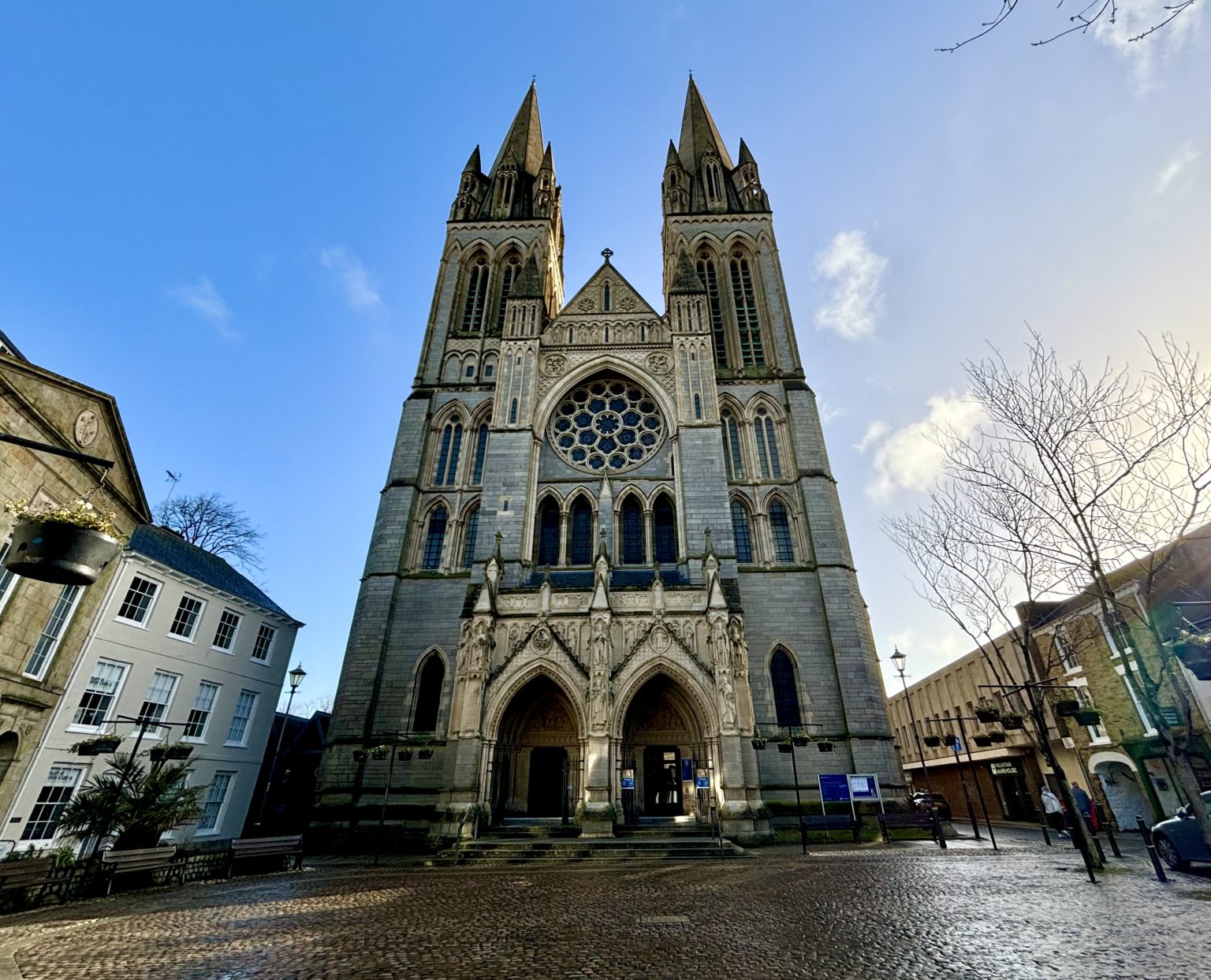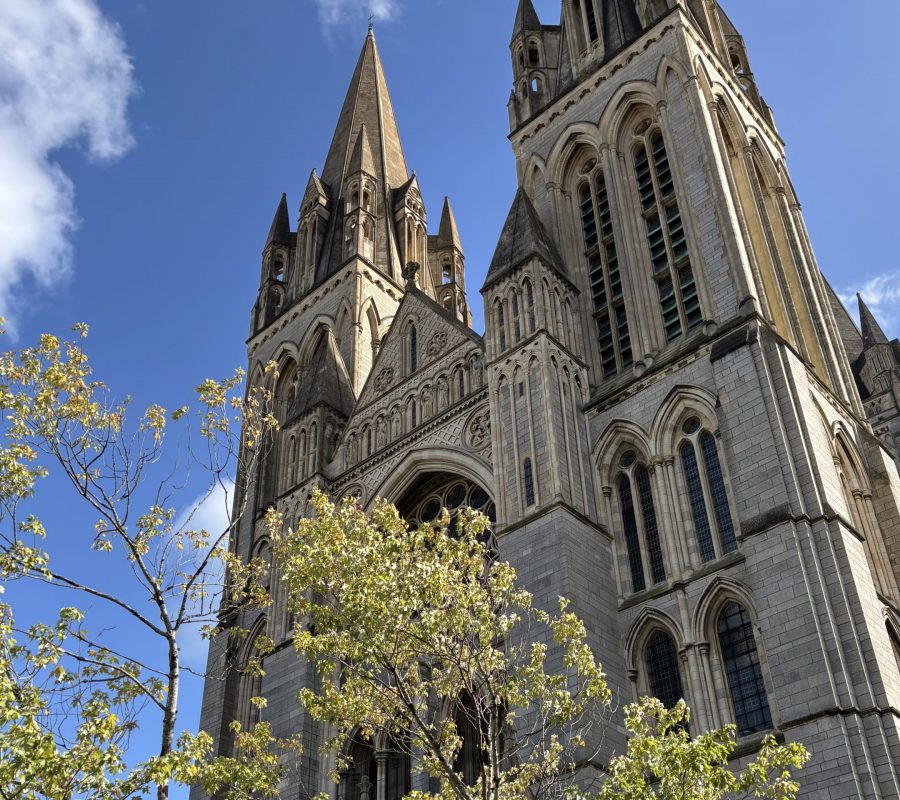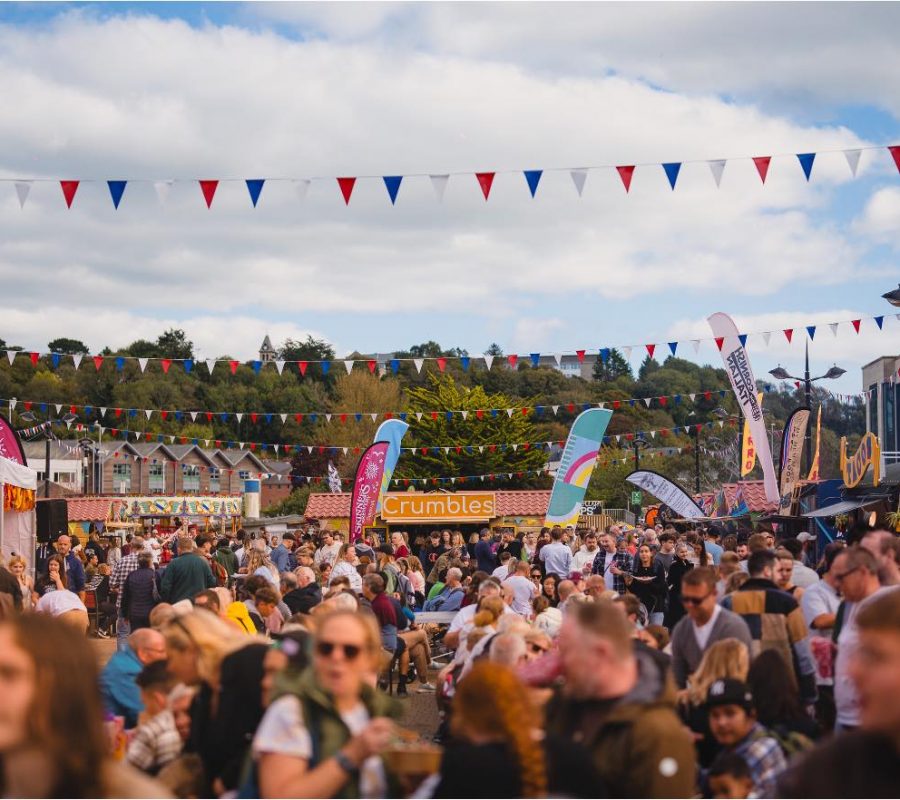Welcome to Visit Truro’s blog! What better way for us to kick off this new venture than to go back in time and explore some of the key moments in history which has shaped Truro into the heritage city it is today. From the iconic three spires of Truro Cathedral to the traditional St Piran’s Day parade, and the recently rebranded Cornwall Museum & Art Gallery, there is much to uncover! Join us as we dive into the stories which form Truro’s unique identity.
Back to its Roots…
Let us begin with the basics and explore the theories behind the meaning of the name Truro. The first theory considers “Tri” meaning three and “Ru” meaning roads, which references the three main roads entering Truro from the north, east and west. However, it is also thought the name comes from “Tri-veru” meaning three rivers, which you can see in places around the city today.
Truro was originally developed from an Iron Age settlement. In the 12th century, a castle was built on this pre-historic site, and the town started growing below this castle.
In 1327, Truro became a coinage town and by order of the King twice yearly, locally mined tin was brought to be assayed (determining the content or quality of a metal or ore). The port of Truro thrived over the years with Truro having control of the waterway right down to the sea at Falmouth, and by the early 14th century, Truro became a major port which could accept foreign commerce.
The heyday of Truro was in the 18th & 19th centuries when wealthy mine owners and merchants built grand townhouses as well as owning country retreats. Truro became a hive for entertainment with balls and plays at the Assembly Rooms at High Cross, educational lectures, as well as exhibitions at the Royal Cornwall Institute.
Until the 1920s, ships could come right up the river into Truro and discharge their cargo onto Back Quay (which is now the main entrance of the Hall for Cornwall). The Quay was covered over in the early 1920’s. Many regretted the loss of the river into the heart of Truro, but silting had occurred which meant larger ships could no longer navigate so far upstream when the tide was low.
Today the space (known as Lemon Quay or the Piazza) is used for the regular Truro Farmers market and many other exciting outdoor events and festivities.
Did you know? Truro is, and always has, been the only city in Cornwall. Truro first gained its city status back in 1877 by the Letters Patent, when it was separated from the Diocese of Exeter and given its own bishop.
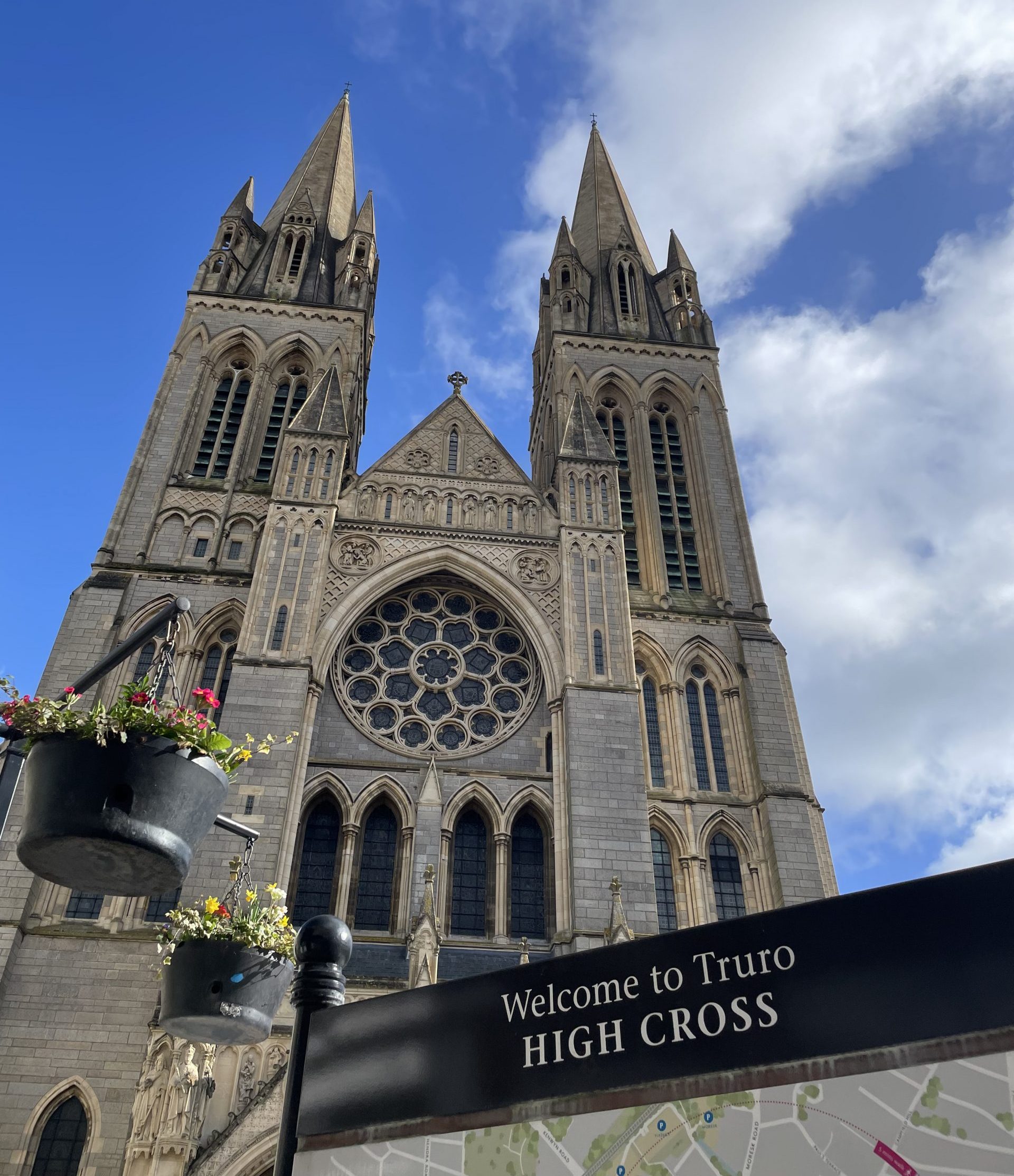
The Three Spires
In 1876, the Diocese of Truro was founded and its first bishop, Bishop Edward White Benson, was consecrated at St Paul’s Cathedral in 1877. After the current (at the time) St Mary’s parish church was deemed too small, renowned Gothic Revival architect John Loughborough Pearson was selected to design an ambitious cathedral in the centre of a busy town. Remarkably – Truro was the first Anglican cathedral to be built on a new site in England since 1220!
The foundation stone of Truro Cathedral was laid by HRH Albert Edward on May 20th 1880, and it took 30 years to complete this extraordinary building. Though the cathedral may be new compared with other cathedrals in Britain, it is often regarded as a ‘triumph of gothic revival architecture’ (Truro Cathedral). The three spires, Victoria, Edward & Alexandra, have become an iconic symbol of Truro’s skyline and visual identity.
Running over limited sessions throughout the year, you can get an exclusive behind the scenes tour of the unseen cathedral’s roof and tower spaces. These dates often sell out fast, so check out the Cathedral’s website and follow their Facebook page to find out when they’re next running these in-demand tours.
St Piran’s Day Celebrations
On the 5th of March every year, Truro comes together to celebrate Cornwall’s traditional St Piran’s Day with its annual parade through the city centre. This historic occasion marks the life and legacy of the patron saint of Cornwall, Saint Piran. Many people gather on the streets of Truro to form this parade, proudly waving the black and white Cornish flags and sporting traditional Cornish tartan, finishing off the event with a hearty chant of Trelawny, the national anthem of Cornwall.
Piran came from Ireland, sailing across the Celtic Sea on a millstone. He showed Cornish miners how to smelt tin and built an oratory at Perranporth (Piran’s Beach) which today is an ‘at critical risk’ monument, from which he would travel through Truro to visit Perranaworthal (Piran’s Wharf) and his well nearby. He was the patron saint of miners, an industry which touched every aspect of Cornish life, and so he became the patron saint of Cornwall.
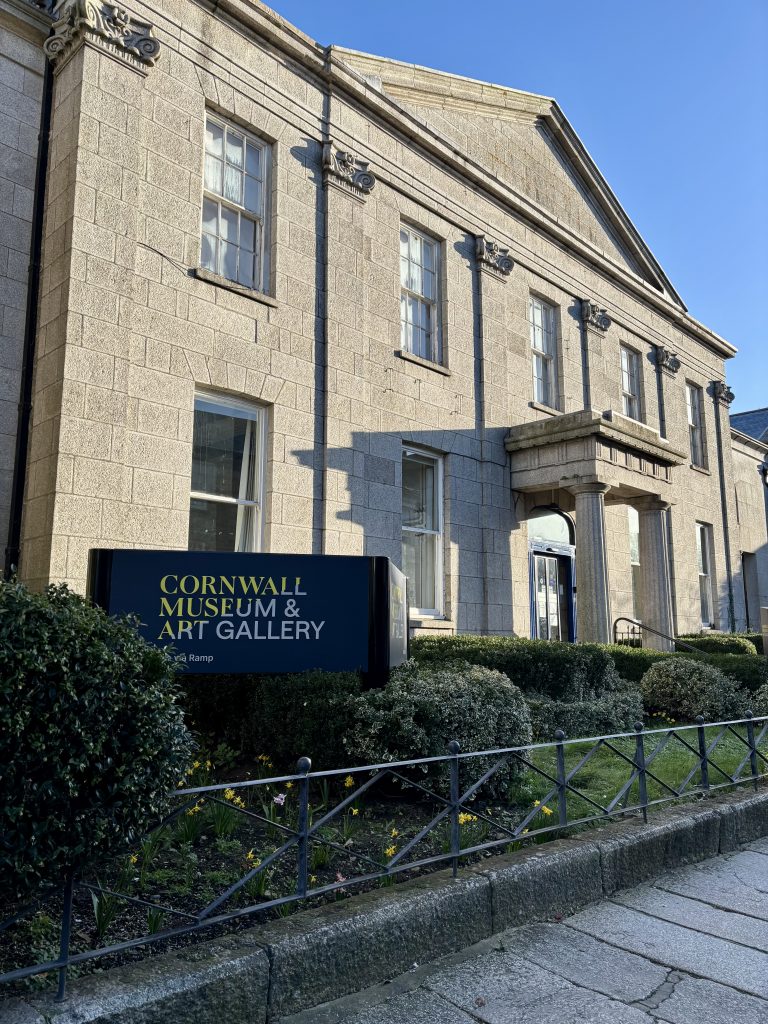
A Fresh New Look
As part of its major transformation works, the museum in Truro has recently received a fresh, new look. Cornwall Museum & Art Gallery (formerly Royal Cornwall Museum) will be an exciting hub to celebrate Cornish identity and history through a fascinating range of artworks, artefacts and educational events.
The museum is set to reopen in March 2025, with an exciting line up of exhibitions including:
- Kurt Jackson: Biodiversity (1 March – 7 July 2025)
- Withy Lore (1 March – 30 June 2025)
- Tony Foster: Exploring Time (8 July – 24 August 2025)
To Wrap Up
Truro’s rich history and heritage make it a unique destination for both the community of people who live here and those who are visiting. Though much has changed over the years, transformation is a positive change and has shaped Truro into the unique city it is today. Whether you’re exploring its historical landmarks, such as Truro Cathedral, or engaging in the cultural festivities, Truro certainly provides an unforgettable experience which honours both its traditional background and innovative features.
For more information and regular updates to see what’s going on, please visit the Visit Truro website and follow us on social media at – www.visittruro.org.uk, @visittruro
Information gathered from a range of sources, including:
https://www.trurocathedral.org.uk
https://localhistories.org/a-history-of-truro/
The History of Truro (2012) by Bert Biscoe.
Image Credit – Visit Truro.
